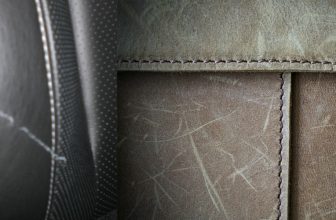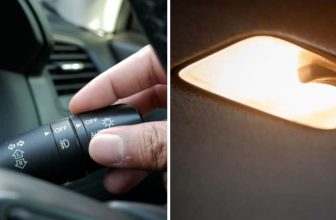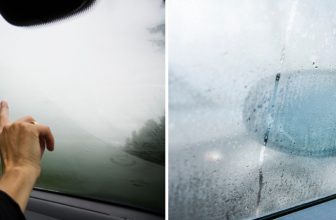How to Remove Oil From Car Paint
Removing oil from car paint can be a difficult task. If not done correctly, it can lead to further damage and a longer time for the paint to dry. Depending on the type of oil and how long it has been on the surface, there are different methods you can use.
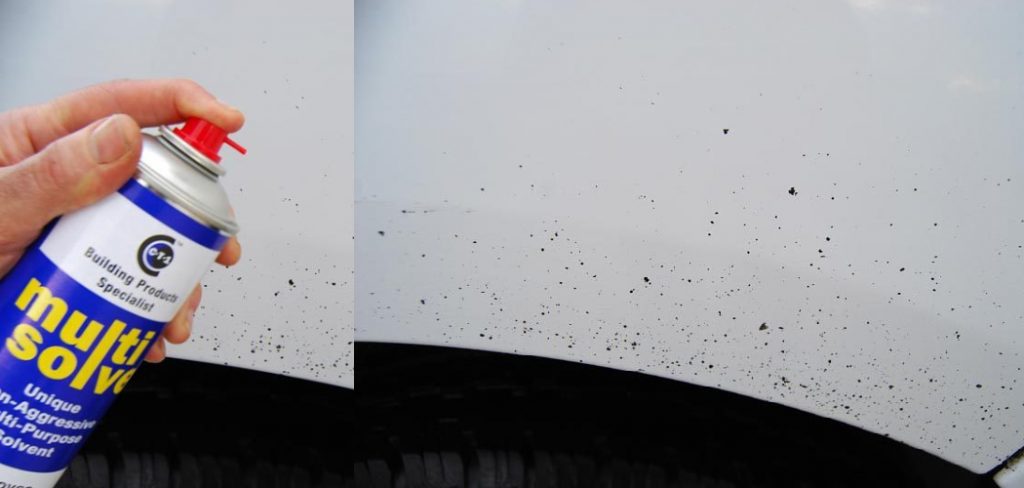
In this blog post, we will go over the best ways how to remove oil from car paint job without causing any additional harm. We’ll also provide some tips on preventing this type of issue from happening again in the future. So read on and find out how you can properly clean up that spill!
What is the Best Way to Remove Oil From Car Paint?
Before we dive into the specifics, it’s important to note that acting quickly is key when dealing with oil spills on car paint. The longer you wait, the harder it will be to remove the oil and the greater chance it can cause permanent damage.
If possible, try to remove any excess oil as soon as you notice it with a clean cloth or paper towel. This will help to prevent the oil from spreading and causing further damage. It’s also important to avoid using water as it can actually help the oil to penetrate deeper into the paint.
Why is It Important to Use the Right Method for Removing Oil From Car Paint?
Different types of oil may require different techniques and products. For example, a degreaser or solvent might work best on motor oil, while dish soap could be more effective for cooking oils. Using the wrong method or product can result in further damage to your car’s paint, such as discoloration or even peeling.
It’s also important to use caution and care when removing oil from car paint. Excessive rubbing or scrubbing can also lead to scratches or swirl marks on the surface. This is why it’s recommended to first test any method on a small, inconspicuous area before tackling the main spill.
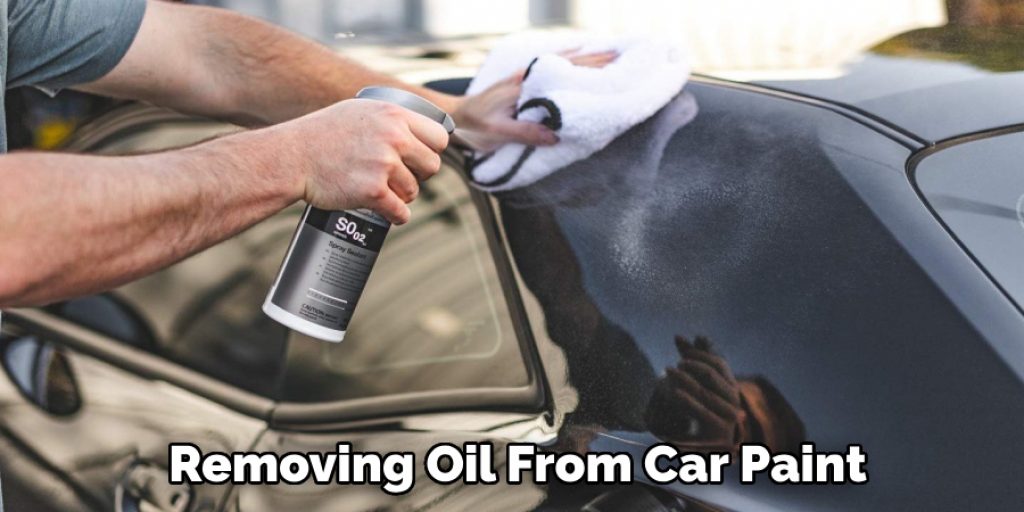
Needed Materials:
Clean Cloth or Paper Towel:
As mentioned earlier, using a clean cloth or paper towel to remove excess oil as soon as possible is key to preventing further damage.
Degreaser or Solvent:
For motor oil, a degreaser or solvent specifically designed for automotive use can be effective in breaking down and removing the oil from the surface of the paint. Make sure to follow the instructions on the product and use it in a well-ventilated area.
Dish Soap:
For cooking oils, dish soap can be used to break down the oil before wiping it away with a cloth or paper towel. Make sure to use a mild, non-abrasive dish soap and rinse thoroughly afterward.
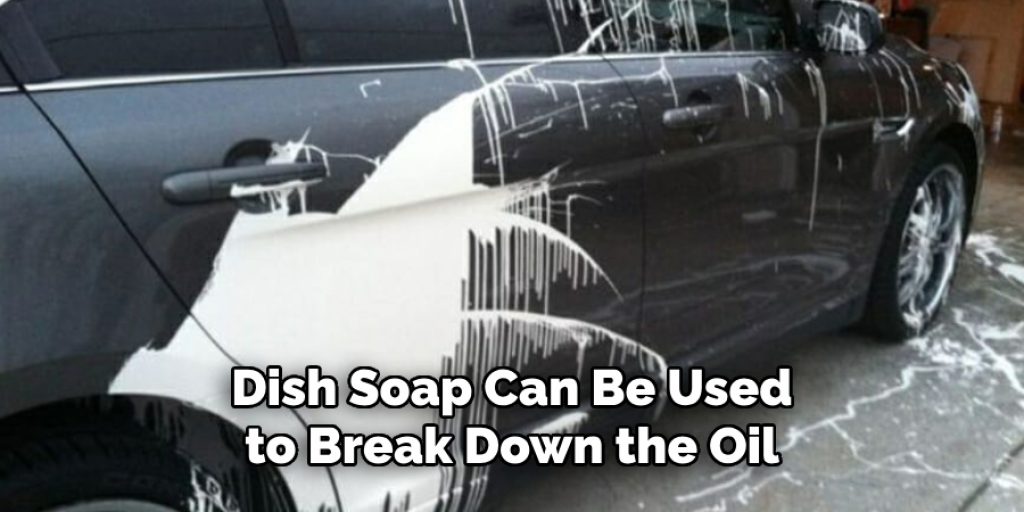
Waterless Car Wash Solution:
If you don’t have access to any of the above materials, a waterless car wash solution can also be used to remove oil from car paint. These solutions are specially formulated to safely and effectively clean the surface without needing any water.
8 Easy Methods on How to Remove Oil From Car Paint:
1. Baby Wipes:
This is your best option if you don’t have expensive cleaning chemicals in your home or if you want to keep the price down when buying professional-grade cleaners. For example, baby wipes contain a mild solvent that safely removes oil from car paint in seconds. However, it’s important to note that this method is only effective on fresh oil spills. For older or more stubborn spills, a stronger method may be necessary.
2. Liquid Dish Soap:
It can be used in place of baby wipes. It also contains the same mild solvent as baby wipes but is a more expensive alternative. This is not recommended for vehicles with lots of hard-to-remove oil buildup because it will take a lot of scrubbing and time to remove it. However, for smaller spills or to simply remove any leftover residue after using another method, dish soap can be effective.
3. WD-40:
This product can safely be used to remove oil from car paint, but only in the case of light to medium buildup. WD-40 doesn’t contain any harsh chemicals that will damage your paint, so it’s safe for use on clear coat finishes and other sensitive surfaces. It also works quite well as a lubricant, so you might even want to keep it around for that purpose. However, for heavy or stubborn spills, a stronger method may be necessary.
4. Cleaning Oil Stains With Vinegar:
If the oil stain is light, you can clean it away using household vinegar. Pour white vinegar on the area, scrub lightly with a soft brush, then rinse with water. If it doesn’t disappear completely, reapply vinegar and scrub again. After scrubbing, rinse with water and wipe the area dry. You can also add a little dish soap to the vinegar for added cleaning power.
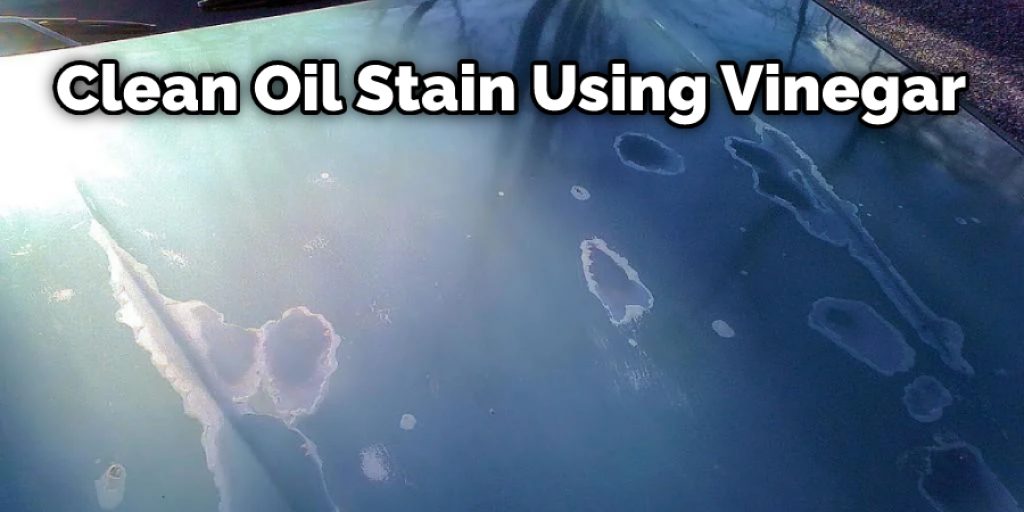
5. Mineral Spirits:
This is a good choice for removing oil from car paint, but it should be used with caution. Mineral spirits are extremely flammable, so avoid exposing the area to open flame or other heat sources while you work. Instead, put on rubber gloves and dab a small number of mineral spirits onto a clean white cloth. Gently rub the spot until the oil comes up, then clean the area with a damp cloth. Finally, dry the area completely with another cloth.
6. Methyl Ethyl Ketone:
Many people consider this one of the best products for removing oil from car paint because it is highly efficient and relatively cheap to use. However, it can also be used as an adhesive remover, so you might want to keep that in mind if you end up with a leftover product. Methyl ethyl ketone can sometimes leave an oily residue on the surface, so it’s important to rinse with water and dry thoroughly after use.
7. Muriatic Acid:
This is one of the most effective chemical treatments for removing oil from car paint and one of the most dangerous to work with. Be sure to use eye protection and rubber gloves while you’re working with it because it can cause burns on contact. To use it effectively, pour some into a clean cloth and apply to the affected area. Rub until the stain is gone, then rinse with water. Dry the area completely. It’s important to note that this method should only be used as a last resort and with extreme caution.

8. Engine Degreaser:
This is another good choice for removing oil from car paint, but be sure to do it outside so you don’t damage any surfaces in your home or garage. Engine degreaser is designed with harsh chemicals that will safely remove even the most stubborn oil buildup in no time at all. Simply spray it on, let it sit for a few minutes, then wipe away with a clean cloth or rinse thoroughly with water. Make sure to follow the instructions on the product and use it in a well-ventilated area. Otherwise, this method can be harmful to your health.

Following these methods will help you effectively remove oil from car paint without causing any further damage. Remember, prevention is key, so be sure to clean up any oil spills on your vehicle as soon as possible to avoid any lasting effects. Always make sure to test a method on a small area first before tackling the main spill to ensure it doesn’t cause any unwanted damage. With the right tools and techniques, your car can be back to its shiny, oil-free state in no time.
Preventative Measures:
Aside from knowing how to remove oil from car paint, it’s also important to take preventative measures to avoid any spills or buildup in the first place. Here are a few tips to help keep your car’s exterior clean and oil-free:
- Regularly wash your car with a mild soap and water to remove any dirt or debris that may contain oil.
- Park in shaded areas when possible to avoid direct sunlight, which can cause oils to heat up and spread on the surface of your car.
- Use a protective wax or sealant on your car to create a barrier between the paint and any potential oil spills.
- Check your vehicle’s fluids regularly to ensure there are no leaks that can cause oil buildup on the exterior.
By following these tips and keeping up with regular maintenance, you can keep your car looking clean and shiny for years to come.
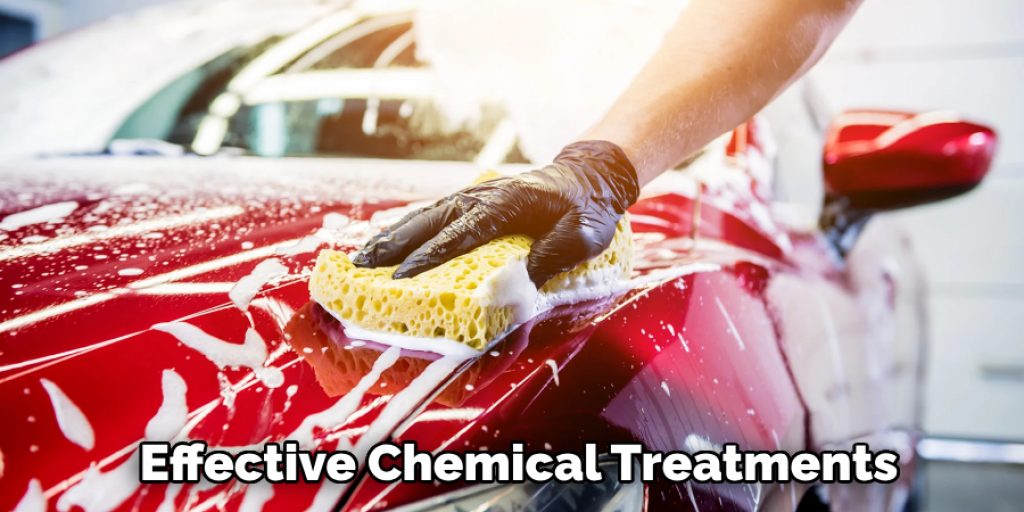
Steps for Removing Car Paint Stains:
Here, we have given a step-by-step guide on how to remove oil from car paint.
Step 1: Wash & Dry the Vehicle
To get the vehicle clean enough to work on your paint problem, you’ll want to wash it thoroughly. Use a pH-balanced car wash solution for this step, and only use one that is safe for all types of paint. If you aren’t sure if your car is painted with enamel, lacquer, or a different kind of finish, check your owner’s manual dealer service department or ask an expert before washing your car.
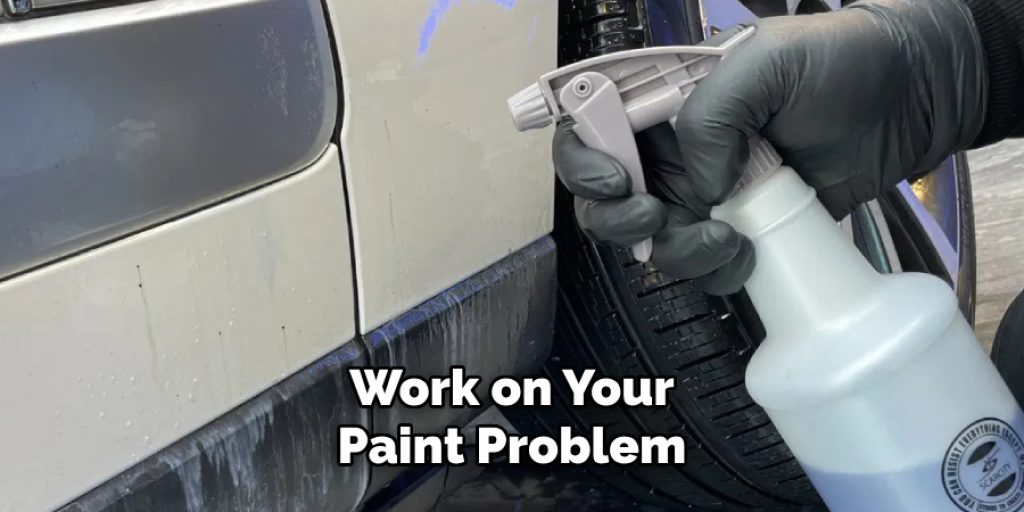
Step 2: Treat the Oil Stain
If you can still see any oil residues on the paint surface, saturate a clean cloth with a generous amount of paint thinner and lay it over the stain for several minutes. This will help soften the oil to be removed more effectively. Be careful not to leave the cloth too long on top of the paint because it can damage your car’s clear coat.
Step 3: Blot Away Excess Oil
Once you have worked on the stain with paint thinner, remove excess residue by blotting or dabbing it away with a clean cloth. Again, use light pressure to avoid spreading the oil further into your paint job. Always remember to use a clean cloth when blotting the stain and don’t scrub it in. It will spread the oil and make matters worse.
Step 4: Blend-Up a White Vinegar Spray Solution
To help remove the oil stains, you can use a solution of 2 parts water and 1 part white vinegar. If you don’t have any white vinegar in your home, dilute regular household vinegar with equal water. Once you’ve mixed up the solution, spray it over the affected area and let it sit for several minutes. If the solution is dripping down onto another part of your car’s paint, be sure to blot it away immediately.
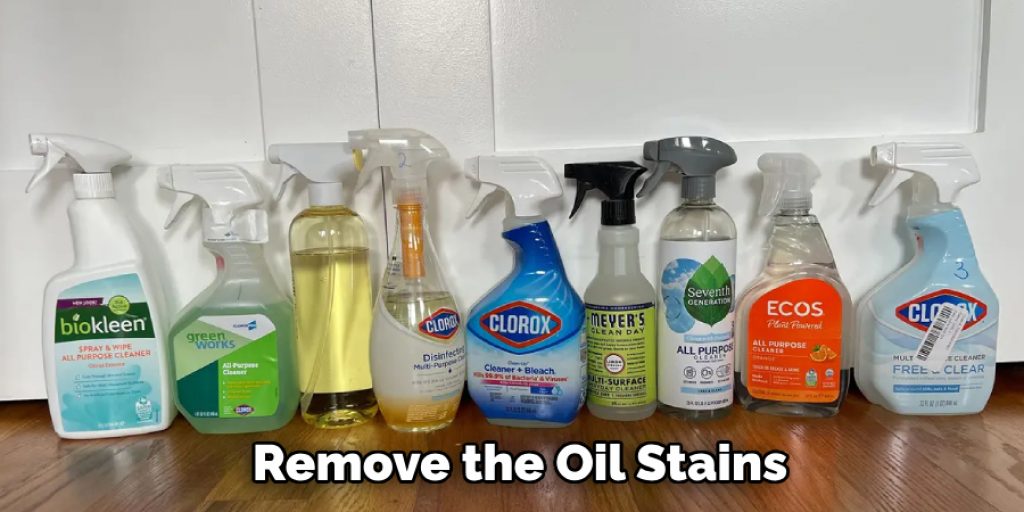
Step 5: Rinse Oil Away
After you’ve let the vinegar solution set for a few minutes, rinse it with clean water and blot or drain dry. You can also use a pressure washer to remove any remaining oil stains. Just be careful not to peel off any decals or emblems from your vehicle, especially when using high-pressurized water.
Step 6: Polish & Wax for Protection
Once the oil is gone, give your car’s paint a good polish with a high-quality wax or non-abrasive cleaner to protect it from future damage. Be sure to use a safe product for all paint types and follow the manufacturer’s directions carefully when applying it. This will also help bring out the shine in your paint and make it look like new again.
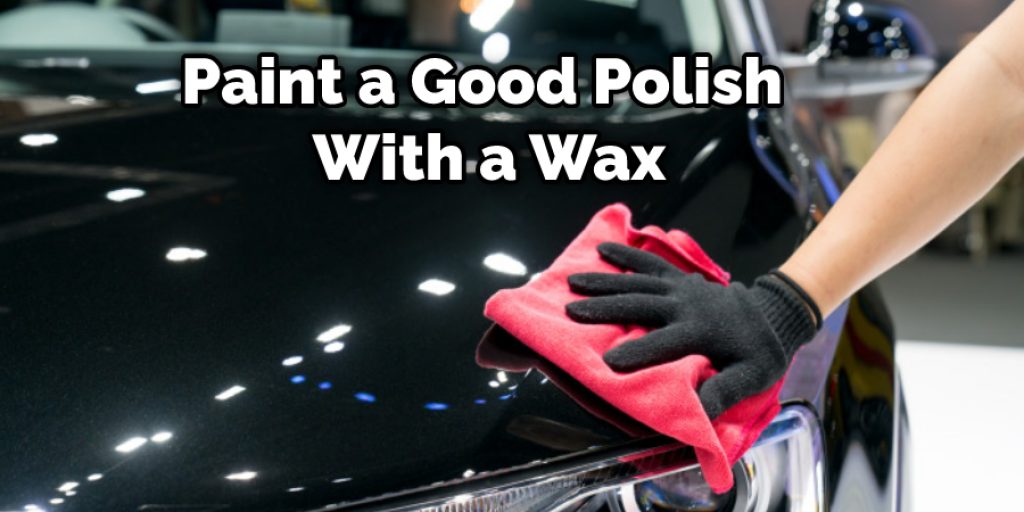
Some Helpful Tips and Advice:
Here are some tips on how to remove oil from car paint.
1. Wash with dish soap.
2. Rinse with baking soda, hot water, and a toothbrush (to get in between the crevices of your car).
3. Use a clay bar to remove oil stuck onto the paint.
4. Polish the area by hand or a buffer machine at the lowest speed to prevent further scratches or marring.
5. Apply dish soap to the area affected, wash with a sponge or rag, then rinse with hot water and allow to dry.
6. If the oil is fresh (wet), try removing it with hand sanitizer instead of washing it with dish soap and baking soda.
7. Apply carnauba wax to the affected area if the oil has already dried.
Can Rubbing Alcohol Remove Oil Paint from Car Body?
Rubbing alcohol is often used to remove oil paint from the body of cars. It is highly miscible with water and has good penetrating qualities, making it an effective solvent for removing oil paint. While it can be used on most types of paint, including latex and acrylics, it should not be used on lacquer paints.
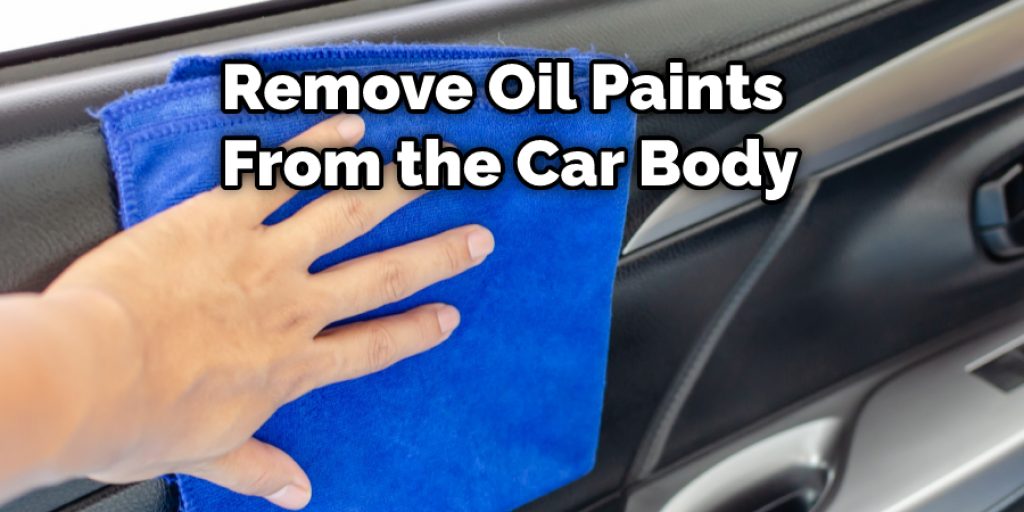
Oil is painted by impregnating a pigment (a dry powder) with oil (a liquid). When the oil dries or cures, it locks the pigments onto the surface of whatever you put it on, which makes it a permanent coating. There are several different types of oil paint. Some require heat or pressure to cure, and others do not.
What Is the Safest Way of Removing Oil Paint From Car Body?
Oil paint is a thin paint used to create a high-gloss finish. Some oil paints have been designed to be painted straight onto metal, plastic, and wood. Unfortunately, oil paint becomes hard when it dries up, making it very difficult for anyone who tries to remove it from the car body or any other surface that it has been applied to. The hardening of oil paint results from exposure to oxygen, which makes it very difficult for anyone who tries to remove the paint from the body.
To remove oil paint from any surface, it is important to start by scraping off the excess oil paint with a metal spatula or scraper covered in plastic. The shavings can be collected and wrapped up in paper before disposing of. If there are still some traces of the oil paint on the car body, it is essential to use a paintbrush dipped in acetone to rub the remaining oil paint.
Can Professional Paint Correction Remove Oil Paint from Car Body?
Yes, professional paint correction can remove oil paint from the car body. However, you need to be aware of some things first. Oil paint will change color when it’s wet or dry. When the oil paint on a car’s body is dry, it looks different from when wet. Knowing this can help you determine whether your car has had previous paintwork and what kind of method was used.
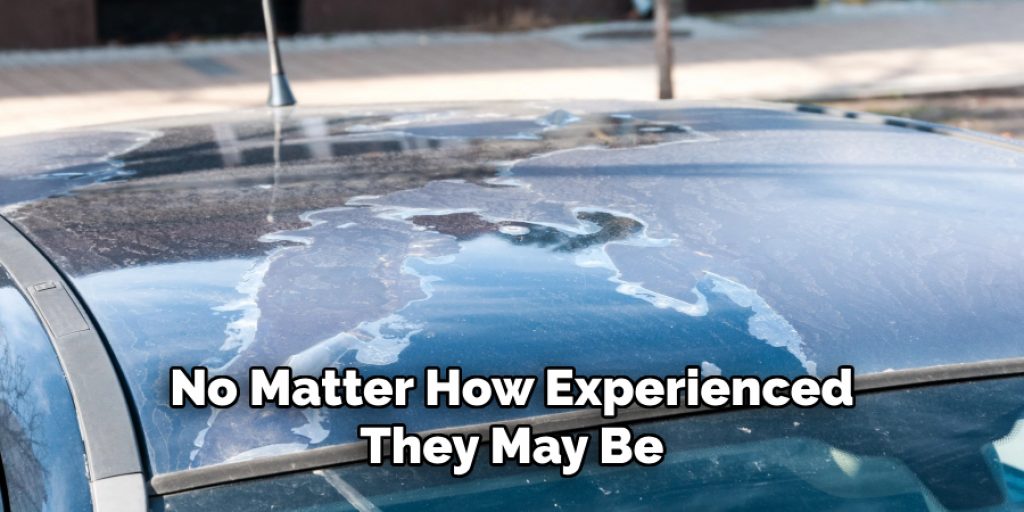
To have your car’s paint professionally corrected, it is necessary to know the color code of your car. This will help determine what chemical is needed for paint correction. A good detailer will always ask you, no matter how experienced they may be.
Conclusion:
You can remove oil from your car’s paint with a clay bar, rubbing alcohol, and some time. Clay bars are long, rubbery rectangles that look like sponges; they’re designed to be used dry or wet. Rubbing alcohol is usually on hand in most households for cleaning purposes; it will act as a lubricant while you work the clay over the surface of your vehicle.
If anything gets stuck on the clay, rinse off before continuing. Once you’ve worked all over the surface of your vehicle using this technique, go back over any spots where there was still dirt or residue left behind by gently wiping down again with more rubbing alcohol-soaked clay. We hope this blog post on how to remove oil from car paint has been helpful. If you have any questions or want to know more, then feel free to comment below!

